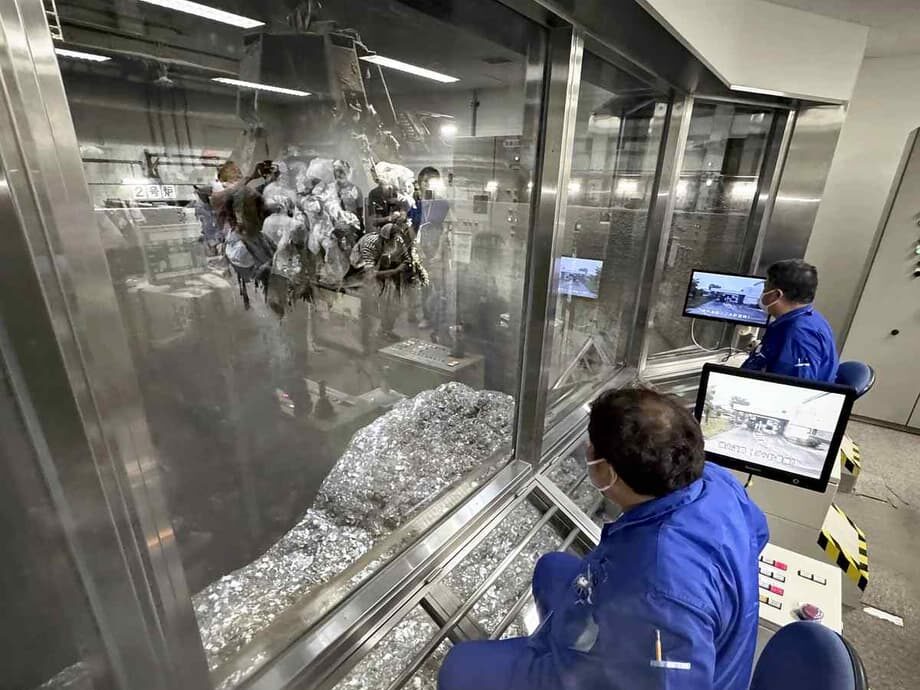Why Restricted Access Is Becoming a Big Draw in Tokyo
Across Tokyo, travelers are snapping up tickets for experiences that go where regular sightseeing cannot. Carefully managed tours now step inside working infrastructure and cultural spaces that are usually closed to the public. From the crane control room of a waterfront incineration plant to select areas at Haneda Airport, from a ropeway operations center in the mountains to the wholesale floors of Toyosu Market, the city is offering a new kind of access that feels rare and rewarding.
- Why Restricted Access Is Becoming a Big Draw in Tokyo
- Inside a Waste Plant and Out to Man-Made Islands
- Airports and Railways Open Their Backstage Doors
- Toyosu Market and the Allure of Food Industry Access
- Culinary Secrets Behind the Counter
- Tokyo Tower and VIP Access Culture
- Niche Enthusiasts and Pop-Up Experiences
- What Is Driving Demand for Off Limit Tours
- Access, Safety, and Ethics
- How to Book These Experiences
- Key Points
This surge reflects a shift in what visitors value. Many are seeking one of a kind, place specific experiences over standard checklists. Organizers are responding with small groups, expert guides, and defined windows of entry that respect safety and security. The result is a style of touring that reduces crowding, creates genuine learning moments, and taps into the city’s invisible layers, the systems that keep it running.
What makes these tours different
They promise access to spaces that usually require credentials. They are led by specialists or insiders who can explain what you are seeing. They keep groups small to minimize disruption. They publish clear rules on what is allowed, sometimes restrict photography, and often require special clothing or safety gear. The payoff is intimacy, context, and a closer look at how Tokyo actually works.
Inside a Waste Plant and Out to Man-Made Islands
In Ota Ward on Tokyo’s bayside, a tour of the Ota Incineration Plant has become a surprise hit. Participants step into the crane control room, a zone typically reserved for trained staff. Behind thick glass, they watch a towering claw crane move waste with quiet precision. Guides explain how tons of refuse are mixed for consistent burning and how combustion reduces volume, with many plants capturing heat to produce electricity.
The itinerary also ventures onto man made islands in the ward, including Heiwajima and Keihinjima. These reclaimed areas host ports and logistics facilities that are essential to daily life but rarely visited. For the latest tour, demand far exceeded supply. About 230 people applied nationwide, and 25 were drawn by lottery to tour the disposal plant and ride to Reiwajima, a small island without public transit.
One long time resident, age 77, said the experience changed how she saw her own neighborhood. She shared how rarely locals get to step into such facilities, even if they live nearby. Introduced by the guides, she explained her reaction before offering a simple reflection.
“I have lived in the ward for a long time, but I am discovering new things all the time.”
Tokyo’s growth has depended on reclaiming land and managing waste at scale. The city’s modern plants filter exhaust and monitor emissions, while island districts enable port operations. Putting these hidden systems in view, even for a short visit, helps people understand where trash goes, how heavy machinery is controlled, and how urban planning and industry intersect in the background.
Airports and Railways Open Their Backstage Doors
Air travel fans have their own access story at Haneda Airport. A long running bus tour brings visitors into a designated off limit zone, so planes can be observed taking off and landing from vantage points that exceed standard observation decks. Security is tight and movement is controlled, but the thrill of seeing aircraft up close, feeling the engine roar, and hearing real time tower chatter explained by a guide has drawn repeat customers.
Another route focuses on transportation technology. A seasonal plan includes a visit to the Hakone Ropeway operations control center and technical area. Guests see the motors that drive thick cables, learn how cabins slow to load safely, and hear how wind and volcanic gases are monitored before service is cleared. The same package offers a look inside the Shonan Monorail depot, where rolling stock is maintained and rails are inspected.
The operator behind these tours says the aim is to bring in new travelers who care about how transport systems actually work and then encourage them to try more conventional sightseeing. In a staff briefing before boarding, an official explained the goal.
“We hope that these arrangements will broaden our customer base to include transportation enthusiasts and encourage them to join our regular tours.”
These experiences are set up with rigorous safety protocols. Groups remain with staff at all times, routes are pre cleared, and sensitive areas stay closed. The result is a curated glimpse, not free roaming access, which preserves security while satisfying curiosity.
Toyosu Market and the Allure of Food Industry Access
Tokyo’s wholesale seafood hub moved from the storied Tsukiji site to the purpose built Toyosu Market in 2018. The new complex, on reclaimed land, features controlled temperature zones, seismic isolation, and updated sanitation. The legendary tuna auctions still take place before dawn. Most visitors watch through a glass gallery that runs above the action. On some days a lottery grants entry to a closer observation platform for a tighter view of bidding and inspection.
For a deeper experience, chef guided tours can bring small groups into the wholesale area that is usually closed to the public. One popular guide is a veteran Japanese cuisine chef with long standing relationships at the market. Guests walk the aisles with him, meet specialty vendors, and sometimes witness skilled workers breaking down large tuna. The tour then moves to the shopping street on the fourth floor where vendors sell knives, dried seaweed, and shaved bonito. Along the way the chef explains the building blocks of Japanese cooking, such as the role of kombu and katsuobushi in making dashi. Many guests add an optional walk at the old Tsukiji outer market to trace the transition from past to present.
From tuna auctions to chef guided market walks
Arriving early is essential since auctions begin around 5:30 in the morning. Staying near Toyosu, or even resting for a few hours at a nearby onsen complex, can make the pre dawn start easier. Etiquette matters because the market is a workplace first. Keep voices low, do not enter marked lanes, and follow the guide’s instructions on where photos are permitted. Guided access avoids confusion and helps ensure that visitors do not interfere with daily operations.
Culinary Secrets Behind the Counter
Behind the counter access is not limited to markets. At Japanese Soba Noodles Tsuta, the first ramen restaurant to earn a Michelin star, a two hour session invites guests to step into the kitchen before opening hours. Participants taste the components of a bowl one by one, from noodles to broth to seasoning sauces, while staff explain how each element is calibrated. The experience ends with a full bowl served with tips on the best way to enjoy it.
Because this takes place in a working kitchen, guests are asked to arrive early, avoid strong fragrances, and share any dietary restrictions when booking. The small group format gives fans a rare look at craft at close range, and it deepens appreciation for the choices that go into a seemingly simple bowl of ramen.
Tokyo Tower and VIP Access Culture
Even icons are getting a fresh angle. A premium tour at Tokyo Tower opens doors to areas that regular tickets do not include. Guests relax first in a quiet lounge with a welcome drink, skip lines with priority entry, and ride a private elevator to the observation decks. The highlight is access to the Diamond Veil space, a stylish lounge that is typically closed to the public, where panoramic views feel unhurried and personal. Capacity is limited each day, which keeps the atmosphere calm and the pace of the tour steady.
This approach shows how popular landmarks can create new value without adding crowding. By clustering amenities and controlling numbers, operators can deliver a sense of occasion and leave guests feeling that they saw something special rather than just another view.
Niche Enthusiasts and Pop-Up Experiences
Smaller event companies are pushing the trend into quirky territory. One group, whose name translates to mania limited liability company, has staged experiences built for fans of unusual urban spaces. A past event invited participants to help prepare a public bath for the day and then take the first soak. Guests cleaned tiles, toured the boiler room, and learned how water temperature and filtration are managed before regulars arrive.
Its president says his own fascination with overlooked places shaped the concept. He described the appeal in a conversation about why so many people sign up for chores that most of us never see.
“It is not often that you get to clean a public bath and see its boiler room. I thought it would appeal to enthusiasts who want to see what goes on behind the scenes.”
The company says most participants are in their thirties and forties and find experiences online, with women making up roughly half of each group and sometimes more. A new plan pairs guests with a researcher of shishimai, the traditional lion dance, for a field study and performance walk. These pop up tours are intimate, time specific, and often sell out quickly.
What Is Driving Demand for Off Limit Tours
Researchers say this pivot toward rare access reflects a larger change in travel preferences. People want experiences that are anchored to a place and a moment rather than just a list of highlights. A tourism policy specialist explained how the market is moving away from volume for volume’s sake and toward quality, a trend that also helps ease pressure on famous sites.
“Traditionally, focus has been placed mainly on tour plans that take large numbers of tourists to certain destinations, but this raises concerns about issues such as overtourism. Going forward, I think there will be growing demand for high-quality tourism with added value.”
Japan’s push for sustainable travel aligns with this approach. Award programs are spotlighting small group itineraries that deliver deep learning and tangible benefits to host communities. One long stay in Nagano blends cultural immersion with limited access to an ancient obsidian mine and special archives at a local museum. Other recognized programs pair visitors with guides in historical districts, rural performing arts collectives, and nature reserves. Revenue supports conservation and revitalization, while tight caps on group sizes keep the focus on engagement rather than throughput.
Access, Safety, and Ethics
Off limit does not mean casual. These tours exist because facility owners and operators set clear conditions. A valid ID may be required. Escorts enforce set routes. Helmets, safety vests, or closed toe shoes can be mandatory. Security checks are standard at airports and live rail sites. Photography is often restricted in control rooms, sensitive maintenance areas, and zones where staff appear in frame. If a weather alert or operational issue arises, access can be curtailed or a tour can be canceled at short notice.
Visitors can help by treating each venue as a workplace. Follow staff directions without exception. Keep phones pocketed where requested and post only images that organizers approve. Be punctual, travel light, and wear practical clothing. Respect that staff are not performers. They are working professionals who have taken time to share knowledge.
How to Book These Experiences
Plan ahead. Many of these tours release limited slots on fixed schedules or run lotteries. Airport and market visits often start early. Staying nearby the night before is wise. Read rules carefully, including identification requirements and age limits. Check whether your tour includes transport inside secure zones. If you need an English speaking guide, confirm language support in advance. Choose reputable operators that publish safety measures and a clear refund policy. Finally, be flexible. The best moments often come from letting a specialist set the pace, then asking thoughtful questions when it is safe to do so.
Key Points
- Small group tours in Tokyo are opening doors to off limit spaces like waste plants, airport zones, ropeway control rooms, and rail depots.
- Demand is driven by a desire for experiences tied to a specific time and place, not mass sightseeing.
- A Haneda Airport bus tour brings guests into a restricted area to watch aircraft movements under strict supervision.
- Chef guided walks at Toyosu Market offer entry into wholesale areas, with early morning tuna auctions viewable from galleries or by lottery.
- At Tsuta ramen, guests enter the kitchen before opening, taste core elements, and learn about craft and technique from staff.
- A premium tour at Tokyo Tower provides access to the Diamond Veil lounge, priority entry, and a quieter viewing experience with limited capacity.
- Event organizers are creating niche experiences, from preparing public baths to studying shishimai with researchers.
- Experts point to growing interest in high quality, added value tourism that also reduces pressure on crowded sites.
- Safety and ethics are central. Rules on movement, identification, and photography protect workers and operations.
- Booking early, confirming language support, and staying flexible increase the chances of securing these rare experiences.




